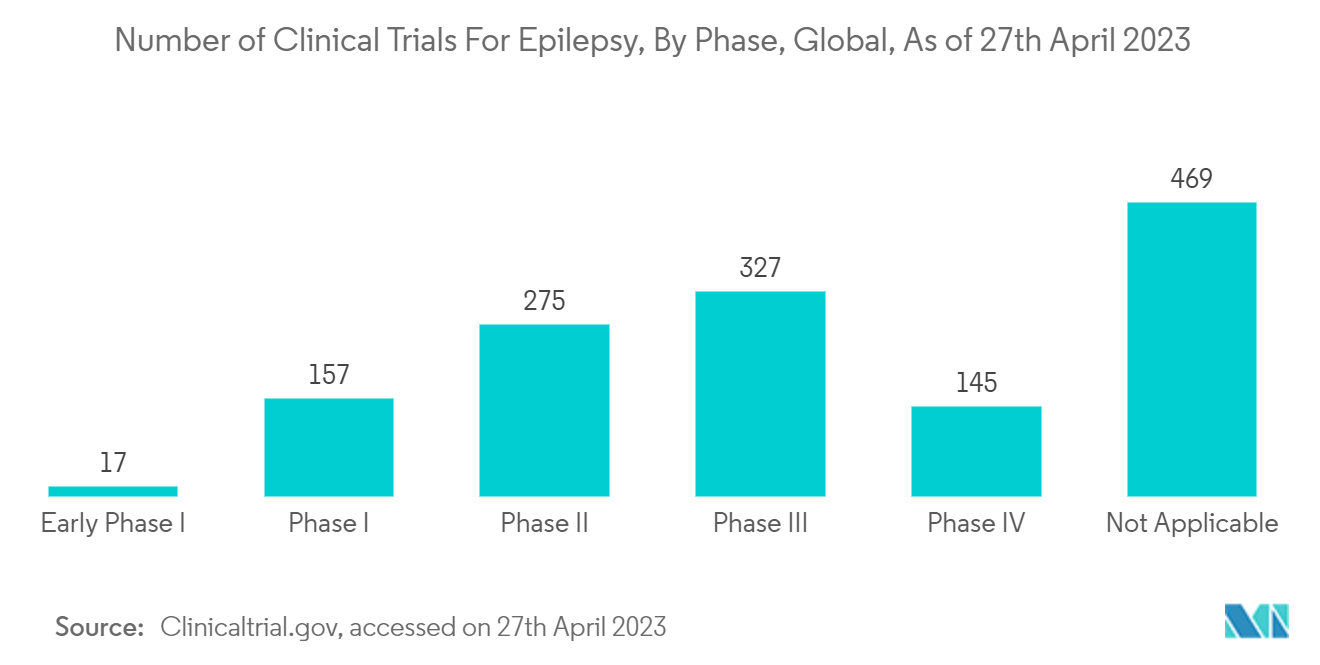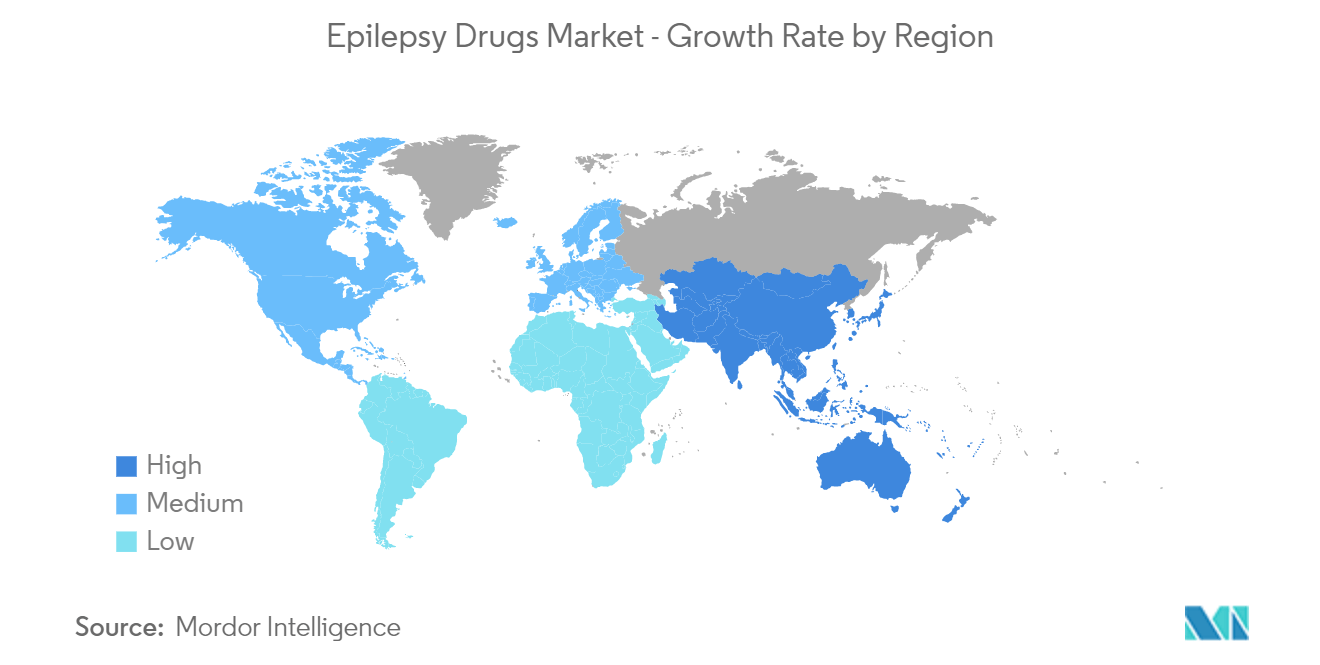Market Trends of Epilepsy Drugs Industry
Second Generation Anti-epileptics is Expected to Hold a Significant Market Share Over the Forecast Period
Second-generation anti-epileptics drugs are expected to hold a significant share owing to several advantages, such as reduced drug-drug interactions, fewer life-threatening adverse events, and a less negative impact on cognitive functions. Also, the rising cases of epilepsy will boost the demand for drugs in the market segment. Furthermore, according to the article published in Neurological Science in January 2021, there are around 500,000 epilepsy patients (prevalence rate: 8.5/1000), with an annual incidence rate of 33.1 new cases per 100,000 people. While the rate of acute symptomatic seizures is 29-39 per 100,000 people per year, the rate of isolated unprovoked seizures is around 61 per 100,000. It is consistently higher than the rate of epilepsy. Similarly, the World Health Organization (WHO) published a report in April 2022 stating that 100% of countries are expected to include at least one functioning awareness campaign or advocacy program for neurological disorders by 2031. Such initiatives by the renowned organization are expected to drive the market in the coming future.
Additionally, the launch of second-line drugs for the treatment of epilepsy by the various market players is propelling the growth of the segment. Also, in February 2021, Dr. Reddy's Laboratories launched Vigabatrin tablets, an antiepileptic drug, in the United States market after receiving approval from the United States Food and Drug Administration.
Besides, the market players are also acquiring other firms to expand their product portfolio. For instance, in January 2022, UCB acquired Zogenix for USD 1.9 billion to bolster its epilepsy portfolio by adding Fintepla (fenfluramine). It is a marketed drug for treating seizures associated with Dravet syndrome, a rare form of childhood epilepsy. This deal continues to expand UCB's extensive therapeutic offering in the epilepsy market, having gained a newly marketed product for patients with rare and difficult-to-treat pediatric orphan epilepsy syndromes.
Hence, owing to the new product launches and acceptance of second-generation epilepsy drugs, the segment is expected to grow over the forecast period.

North America is Expected to Hold Significant Share over the Forecast Period
The North American region is expected to show significant growth over the forecast period owing to the increasing burden of epilepsy coupled with the market players' strategic initiatives, awareness campaigns, and launches of new products. In November 2022, a press release by the CDC stated that epilepsy affects about 3.4 million Americans. About 1 out of 10 people may suffer from a seizure during their lifetime. There are over 260 epilepsy centers in the United States. Healthcare providers at these centers specialize in managing epilepsy and provide expert care to children and adults. Thus, the prevalence of epilepsy in the region is expected to increase the demand for its treatment and, thus, increase the market growth.
The approval of drugs for different age populations is also boosting the market's growth. For instance, in August 2021, UCB received United States Food and Drug Administration (FDA) approval for an expanded indication for BRIVIACT (brivaracetam) CV tablets, oral solution, and injection to treat partial-onset seizures in patients as young as one month of age. It is the first time the IV formulation of BRIVIACT will be available for pediatric patients when oral administration is not feasible. It is one of the first IV formulations approved to treat partial-onset seizures in children one month and older (nearly 7 years).
Furthermore, various organizations initiated research in the region. For instance, in October 2022, Avicanna Inc. expanded its research collaboration in epilepsy with a new collaboration with the University of Toronto. It is to explore the efficacy of Avicanna's proprietary formulations in pre-clinical models for epilepsy. Thus, the market is expected to grow over the forecast period due to the abovementioned factors.


